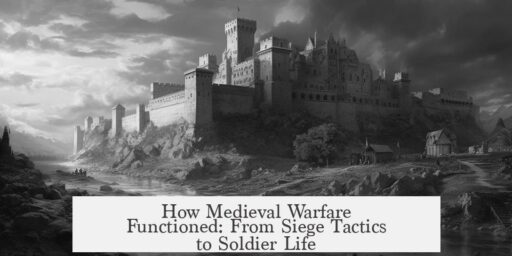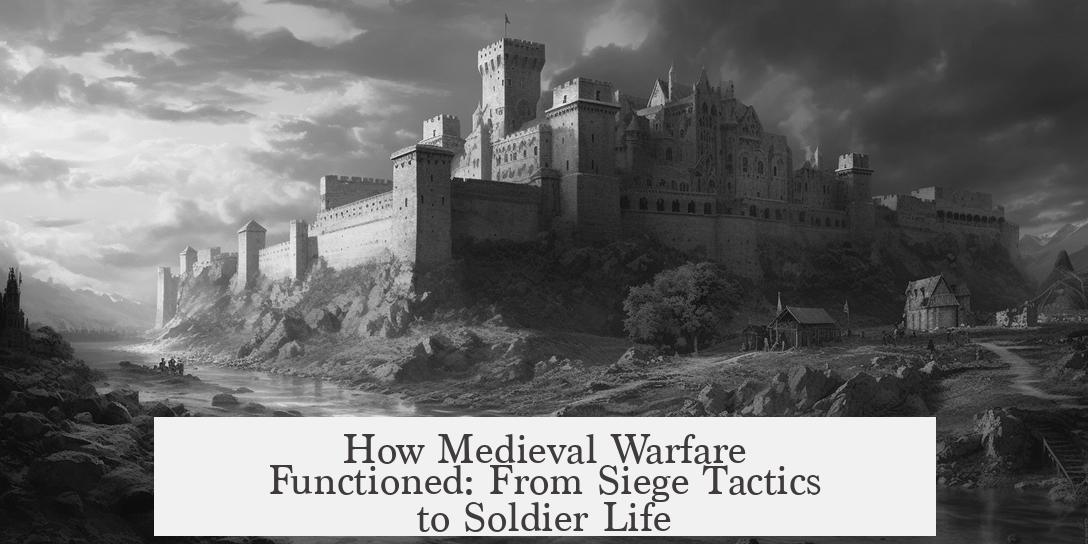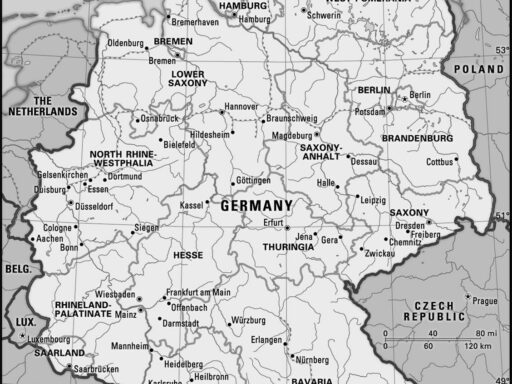Medieval warfare was dominated by sieges, raids, and skirmishes rather than large pitched battles, which were rare and often unplanned events. Most fighting involved prolonged sieges that could last weeks or months, ravaging castles and fortresses while disrupting civilian life. These sieges sometimes generated entire temporary cities around the besieged sites, complete with markets and fairs.
Large battles were not common and typically occurred unexpectedly. Armies did not arrange formal meetings or detailed battle plans in advance. When clashes happened, they often resulted from surprise encounters or maneuvers rather than premeditated engagements.
Medieval armies resembled mobile communities more than strictly military units. Soldiers traveled with family members, including wives and children, and a variety of non-combatants such as blacksmiths, cooks, squires, entertainers, and merchants. This support network was vital for maintaining morale and logistics during campaigns.
Armies also often carried the king’s court and treasury, reflecting the ruler’s need to govern even while on campaign. A notable example is King Philip II of France, who lost important royal records at the battle (or rather skirmish) of Fréteval to Richard the Lionheart, demonstrating how warfare could involve the transfer of entire state functions on the battlefield.
The landscape of medieval Europe, studded with towns and villages, meant battles frequently occurred close to civilian settlements. Townsfolk sometimes watched fighting unfold near their homes, making battles a rare but vivid spectacle for local populations.
- Large pitched battles were rare and often spontaneous rather than scheduled.
- Sieges, raids, and skirmishes caused more destruction and were the backbone of medieval warfare.
- Armies moved as communities, including soldiers’ families and many non-combatants.
- Sieges could create temporary towns outside fortresses, with full market activity.
- Rulers brought their court and treasury on campaign, entwining governance and warfare.
- Civilians often witnessed battles nearby, making warfare a communal event.
So…how did medieval warfare actually work?
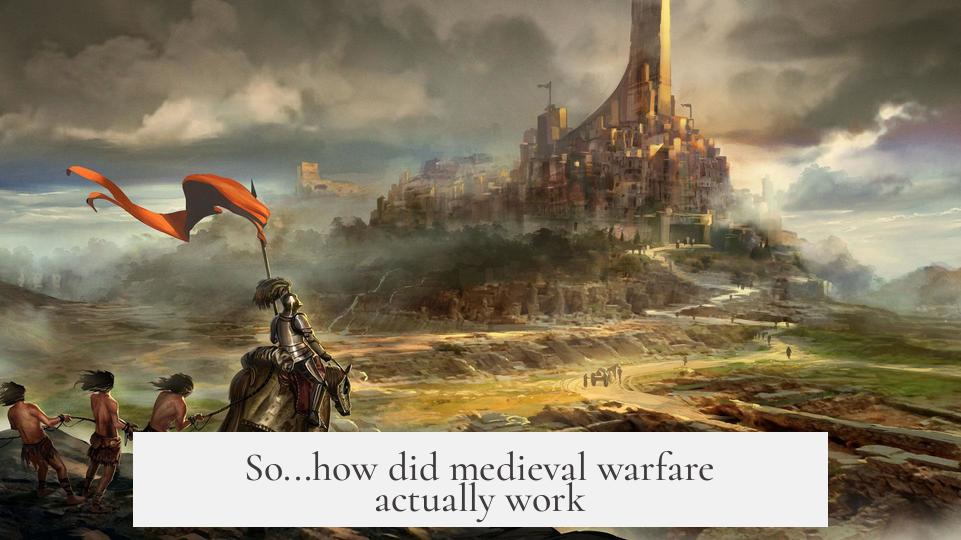
Medieval warfare didn’t look like what we imagine from Hollywood movies—it was rarely about massive, epic battles lined up neatly on a field. In fact, large-scale pitched battles were quite rare, with most fighting involving sieges, skirmishes, raids, and the day-to-day grind of war. Ready for a surprising journey into how war *really* worked back then? Let’s dive in.
Large-Scale Battles: The Exception, Not The Rule
We often picture knights clashing in grand battles—epic showdowns of good versus evil under fluttering banners. But the truth? These battles were uncommon. Entire wars could unfold with barely a single large pitched battle, especially in the early to high Middle Ages. Armies didn’t usually decide, “Let’s meet at dawn on the open plains to duke it out.” Instead, battles happened sporadically, often when one side got caught off guard.
This lack of careful pre-battle planning contradicts the popular idea of generals poring over maps to schedule encounters. Battles erupted more by chance or tactical necessity than by appointment. It’s kind of like showing up to a party you didn’t know was happening—and suddenly you’re in the middle of a brawl.
Sieges, Skirmishes, and Raids: The Real Warriors of War
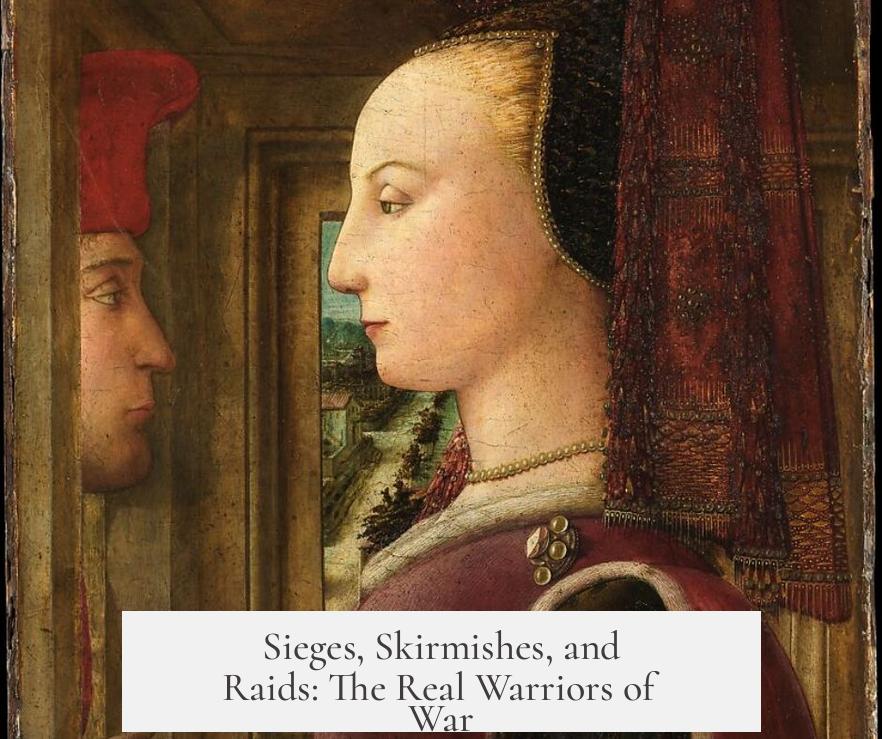
If pitched battles grab the limelight, then the real backbone of medieval warfare lies in sieges, skirmishes, and raids. These forms of combat made up most of the fighting—and they often caused more death and destruction than a single battlefield clash could.
Sieges could drag on for months or even years. The stakes? Control of castles, towns, or strongholds vital for political and military power. Unlike a quick slugfest, sieges strained resources, morale, and lives in a slow, grinding war of attrition. Sometimes, the attacking side would build entire temporary cities by the siege lines—complete with markets, fairs, and workshops—as the siege lasted so long.
The Army: A Mobile Medieval City
You might expect an army to be just soldiers, armor, and weapons, but medieval armies were more like mobile villages. Families, merchants, blacksmiths, cooks, entertainers, and squires traveled with the fighting forces. Wives and children often accompanied soldiers—not like modern armies where civilians are miles away.
Imagine an entire moving community on the march. These non-combatants provided essential services, from mending armor to feeding tired troops. They also turned military campaigns into socio-economic hubs, where merchants capitalized on the army’s needs.
The Scale And Scope Of Medieval Armies
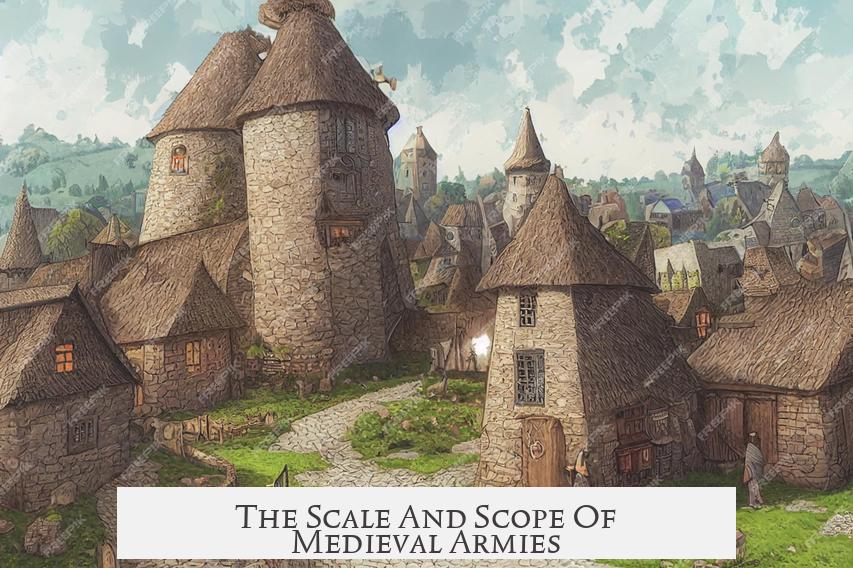
Some campaigns were large enough to host kingdoms’ courts and treasuries. Kings didn’t just send armies—they brought their whole administration. A notable example is King Philip II of France during the skirmish of Fréteval against Richard the Lionheart. Records and treasures traveled with the armies, crucially still ruling their realms from the field. When these items were captured, as Richard did, it was a significant loss far beyond mere coins—it disrupted governance.
And those massive sieges? They weren’t just military operations but complex events. Consider how markets and fairs sprouted near siege camps, turning war zones into bustling temporary towns. It wasn’t just about fighting; it was survival, logistics, and opportunism.
Battlefields Had Spectators (Yes, Really!)
Medieval Europe was dotted with towns, so battles, if they happened near populated areas, had spectators. Townsfolk often clustered near their windows or on hillsides, watching fights unfold just beyond their homes. For many, watching battle was the biggest event they’d ever see—a grim sort of public spectacle.
This setup adds a vivid texture to war: neighbors watching chaos unfold, markets running nearby, and lives continuing amid the conflict. War wasn’t isolated; it was woven into the fabric of medieval life.
Why Does This Matter Today?
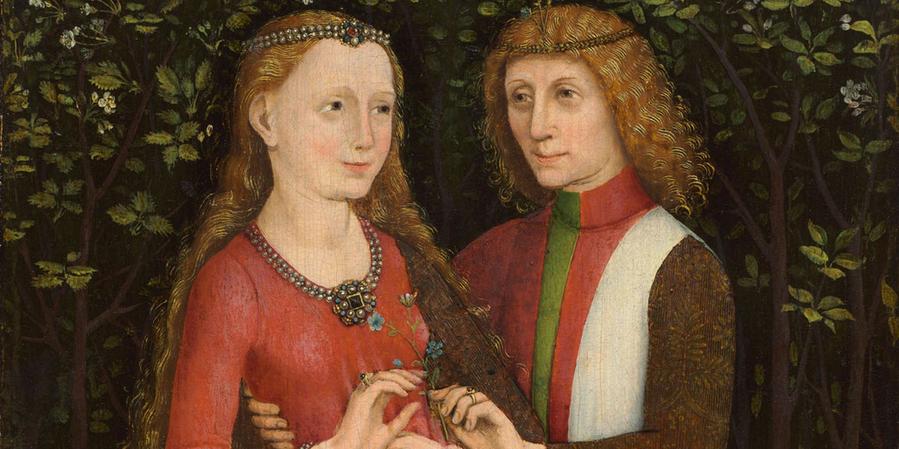
Understanding medieval warfare’s true nature reshapes our ideas about knights, battles, and strategy. The stories aren’t just about heroic clashes but about endurance, community, and adaptation. Armies as moving societies, drawn-out sieges, and spontaneous battles reveal a complex picture.
So, next time you watch a medieval battle scene in a movie or read about knights, ask yourself: “Is this how it really was?” The gritty, sprawling reality is far more fascinating—and less cinematic—than Hollywood’s epic battle montages.
Some Questions To Ponder
- How did the presence of entire families and non-combatants change the pace and logistics of medieval campaigns?
- Why might prolonged sieges have been more devastating overall than a single pitched battle?
- What modern military lessons can be drawn from the mobile, multi-purpose nature of medieval armies?
In conclusion, medieval warfare is not just about dramatic battlefield clashes. It’s a story of relentless sieges, bustling mobile communities, and unplanned battles shaping history in unexpected ways. So next time you think of medieval war, remember: it’s not about gathering armies in neat rows; it’s about the messy, human struggle to survive, conquer, and live—even on the move.
